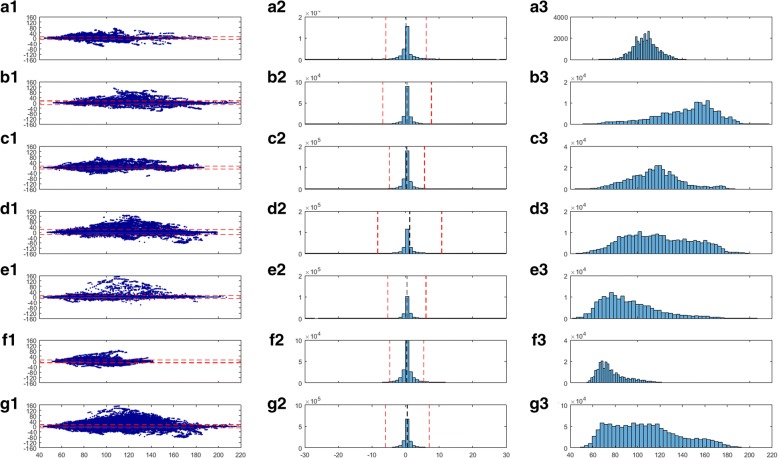Fig. 1.
A1) Residuals against means of chest strap electrocardiogram (ECG)-based heart rate (HR) and wrist strap photoplethysmography (PPG)-based HR for walking, where the red dashed lines represent 95% confidence intervals. Color coding (blue = low to red = high) highlights the peak data density for both residuals and means. A2) shows the frequency distribution of the difference between chest strap ECG and wrist-strap PPG; red dashed lines represent plus, minus 1 standard deviation, and the black dashed line represents the mean difference. A3) shows the frequency distribution of the mean HR measured by the two methods. B1,2,3) for running; C1,2,3) for cycling; D1,2,3) for gym activities; E1,2,3) for sedentary activities; F1,2,3) for household activities and G1,2,3) for all activities

